From Caped Crusader to Canine Crusader
Burt Ward, Gentle Giants Rescue
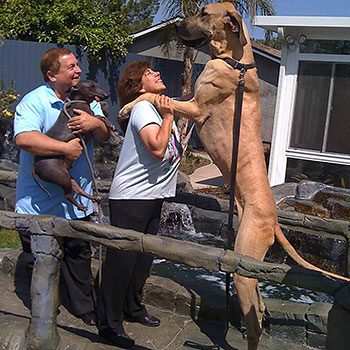 Actor Burt Ward was the original 'Robin' on the hit series Batman. Now he's devoted to giant breed dogs and runs the Gentle Giant Rescue. He tells Animal Radio that many Great Danes share his bed with him and his wife Tracy.
Actor Burt Ward was the original 'Robin' on the hit series Batman. Now he's devoted to giant breed dogs and runs the Gentle Giant Rescue. He tells Animal Radio that many Great Danes share his bed with him and his wife Tracy.
Burt Ward and his wife have operated Gentle Giants Rescue and Adoption for many years. They are the world's largest giant breed dog rescue. All together Burt has rescued 45 different breeds. The AKC acknowledges 164 breeds of dogs and he has had 45 of them.
Altogether, they've rescued more than 15,500 dogs. All of these dogs would have been put to sleep if Burt and his wife hadn't been there to take them out of the shelter or to take them from an owner that had to give them up.
Burt tells us he doesn't take any money from his Gentle Giants Rescue charity, even though it's not cheap to run. On an average day, they go through 600 pounds of food. That's 16 bags of 33-pound bags of dog food a day. That's 112 bags a week. This is way too much for them to lift and carry, so they have people that help. Burt also says his wife is like the Mother Theresa of dogs, and she personally handles all waste from all 50 of those dogs by herself.
At one point when they were first taking in all of these dogs, they were doing 50 surgeries a week, again, not cheap. As a result, they had to use multiple clinics. In fact, there were over 3,000 surgeries a year that they were doing and they paid for everything out of their own money. Even though they're a 501c3 charity and can take donations, they just don't have time to go out and ask for money. They just pay for it themselves.
Burt explains how he got into rescuing large breed dogs. He moved from Los Angeles to his current location, about an hour east of Los Angeles, halfway between Los Angeles and Palm Springs. It was Burt, his wife and their young daughter. They then decided to get her dog. As a child, Burt always had pets. He tells us that when he was doing Batman, because of security issues, he had two Dobermans. It was at this time that he learned how to handle protection dogs. Over the years, he even handled dogs for the military and police dogs. He explains that he and his wife are expert handlers, so they wanted to get a dog for their daughter and they wanted to get a Great Dane.
They were surprised to find it very difficult to find Great Danes, because there weren't any. They did some research and found out about a rescue that had Great Danes, but the lady running it had died. So people who were giving up their Great Danes, if they couldn't find a home, were just taking them to animal shelters. In shelters, dogs are barking and in cages all day long, so who's going to take out a big Great Dane that's barking in a cage? Unfortunately, these dogs were then all being put to death. This really upset Burt and his wife, because Great Danes are very gentle dogs. They call them gentle giants, hence the name of his rescue.
It was the first week in August of 1994, and Burt told his wife that they couldn't let these dogs die. He suggested taking over the rescue for just a couple of weeks until they could find somebody else to take it on. It's been over 25 years and Burt says he's a patient guy, but nobody has come to take it over!
Burt tells us they couldn't stand it when they would lose one of their dogs at 7 to 9 years of age, which is typical for a giant breed dog. So they vowed that if they could find a way to help them live longer, they would. Initially, they developed a feeding and care program. They feed and care for dogs differently than other people do. He tells us they have a whole page on their website to care for dogs differently.
With their feeding and care program, they got to a point where their dogs were living on average about three years longer. So their Great Danes, instead of only living seven to nine years, we're actually living 10 to 12 years. They then wondered if there anything else they could do? Because they had the money to do it, they decided to make their own food with their expectations being very small. But what if they made the finest food in the world? Maybe they could pull out another year of life for their dogs. Because of this, many of their dogs lived more than twice their normal lifespan.
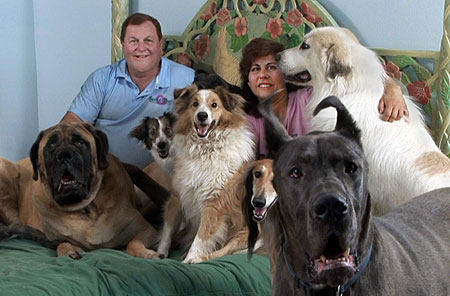 While every dog is technically a rescue, Burt says they are all his personal dogs until they get a home. So it's no surprise that the dogs sleep in bed with Burt and his wife. A minimum of around 25 of the 50 dogs are usually in bed with them. He tells us if you go to his website you will find a wonderful video of this. It's in slow motion because there are so many dogs with them in bed. These are all giant breeds and some weigh up to 300 pounds. Most people have never even seen a 200-pound dog. Some of his Great Danes are seven foot five, which is three inches taller than Shaquille O'Neal the basketball player, when they stand on their hind legs.
While every dog is technically a rescue, Burt says they are all his personal dogs until they get a home. So it's no surprise that the dogs sleep in bed with Burt and his wife. A minimum of around 25 of the 50 dogs are usually in bed with them. He tells us if you go to his website you will find a wonderful video of this. It's in slow motion because there are so many dogs with them in bed. These are all giant breeds and some weigh up to 300 pounds. Most people have never even seen a 200-pound dog. Some of his Great Danes are seven foot five, which is three inches taller than Shaquille O'Neal the basketball player, when they stand on their hind legs.
Over the years, Burt tells us they have had more than 50 large dogs in their house at all times, 24/7. They are all different sizes, but mainly the giant breeds. Everybody gets along harmoniously and all of their dogs are trained not to bark unless they sense danger, because barking is the beginning of aggressive behaviors.
Burt says he and his wife love what they do. It makes them happy. This is their life's work. It's their charity and they are just thrilled that they can try to make a difference for people who love their animals.
Visit Website
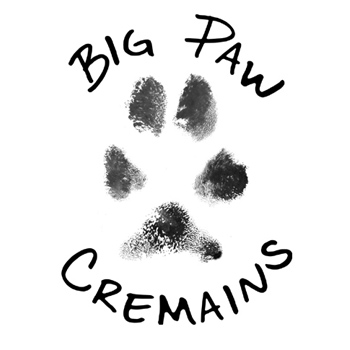 Memorialize Your Pet with Big Paw Cremains
Memorialize Your Pet with Big Paw Cremains
 We've recently lost one of our studio dogs, which hasn't been easy on us. She was with us in the studio for 14 years, and now that she's gone, we still want to keep her close to us and have a little piece of her with us always. There are many ways to honor the lives of our pets, but we were specifically looking for rings, when we came upon Big Paw Cremains. They make all types of jewelry, from rings to necklaces to earring and bracelets, as well as cufflinks and tie tacks, with cremains. They even make figurines. All of their items are hand crafted in Colorado and hypoallergenic. We were particularly interested in their rings, with the cremains inside that you can actually see, so heart warming! We've started the process with Big Paw Cremains, by receiving a collection kit to send back her ashes. They also included the rings, so we could make sure they fit before adding the ashes. We have sent everything back and it was so easy. We are now waiting for the completed product, which should be here in a matter of weeks. We can't wait!
We've recently lost one of our studio dogs, which hasn't been easy on us. She was with us in the studio for 14 years, and now that she's gone, we still want to keep her close to us and have a little piece of her with us always. There are many ways to honor the lives of our pets, but we were specifically looking for rings, when we came upon Big Paw Cremains. They make all types of jewelry, from rings to necklaces to earring and bracelets, as well as cufflinks and tie tacks, with cremains. They even make figurines. All of their items are hand crafted in Colorado and hypoallergenic. We were particularly interested in their rings, with the cremains inside that you can actually see, so heart warming! We've started the process with Big Paw Cremains, by receiving a collection kit to send back her ashes. They also included the rings, so we could make sure they fit before adding the ashes. We have sent everything back and it was so easy. We are now waiting for the completed product, which should be here in a matter of weeks. We can't wait!
Visit Website
Klepto Kitty
Melinda Metz, The Secret Life of Mac
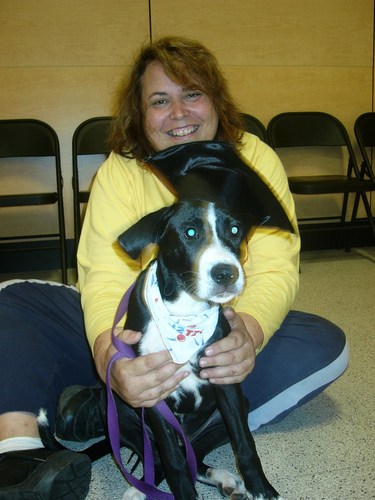 Inspired by the viral videos of cats stealing clothes and other items, author Melinda Metz weaved a story about a Klepto-kitty named Mac who will steal your heart. Why is it some cats, left to their own devices, choose to abscond with everything from lingerie to money?
Inspired by the viral videos of cats stealing clothes and other items, author Melinda Metz weaved a story about a Klepto-kitty named Mac who will steal your heart. Why is it some cats, left to their own devices, choose to abscond with everything from lingerie to money?
Melinda's book, The Secret Life of Mac, is a story about a klepto kitty, a cat that takes off with stuff. It was Melinda's editor who came to her with the idea for the book, as he'd been watching a lot of klepto kitty videos. This prompted Melinda to start watching them. At the time, her editor was actually thinking of doing a nonfiction book about them, because they became such a phenomenon. However, his wife said she thought that he should do a romance with klepto kitties and then that's how Melinda got involved. It's almost a real story, because it was inspired by real stuff happening, but it's still fiction.
Without giving it away, Melinda explains that this is the second book about Mac. In her first book, Talk to the Paw, Mac got his person together with another human. The couple then went off on their honeymoon and her cousin came to cat sit for him. Right away Mac could smell that she was unhappy. So he took on these projects himself reluctantly, because he thought that people weren't smart enough to solve their own problems. Mac does things mostly by smell. He smells out a person that he thought would be good for his pet sitter and then he got to work to get them together. But that's not all; he also foiled a little bit of a crime.
In doing research for this book, Melinda read all kinds of different things about cat behavior. Even though she had a cat for 17 years, she tells us she didn't know about the little smell gland they have on the roof of their mouth that gives them extra information, by sort of flicking air in with their tongues. She researched things like cat body language with their whiskers, ears, tails and sense of eyesight. She also read a bunch of different factual cat information and watched many videos for inspiration.
In The Secret Life of Mac, Melinda said that there are a couple of minor characters that are based on actual people that she knows. The story is set in Hollywood where she lived for a while and her neighbors at the time, inspired a couple of the characters. Melinda says she left their correct names in the book, as she didn't think they'd mind. She said they were great neighbors and they knew everything about whatever was going on. The couple were both in their eighties and they were just such characters. In fact, Melinda dedicated her first book to them, but she did make it clear that she made up some stuff in the book.
Surprisingly, as an author and a reader, Melinda was fairly resistant in kindergarten to the whole reading and writing thing. Her mother was an elementary school teacher who loves reading and she wanted Melinda to learn to read before she started kindergarten. However, Melinda had no interest at all, so her mother just let it go. Later on Melinda did become quite a reader pretty quickly and now is a great writer.
Visit Website
Vegas Bats Test Positive for Rabies - What's the Risk? - Dr. Debbie
 Think your pet doesn't need a rabies vaccine because it lives indoors? Think again. Bats have been known to fly through open windows or chimneys. Dogs and cats that go outdoors are at risk for rabies exposure through wildlife. Felines that hunt and bring "presents" have added rabies risk.
Think your pet doesn't need a rabies vaccine because it lives indoors? Think again. Bats have been known to fly through open windows or chimneys. Dogs and cats that go outdoors are at risk for rabies exposure through wildlife. Felines that hunt and bring "presents" have added rabies risk.
Common questions about rabies:
What is Rabies?
Rabies is a viral disease causing encephalitis (brain inflammation) that affects all mammals including humans. The disease is almost always fatal. Over 59,000 people worldwide die of rabies every year, but fortunately U.S. human deaths are rare with 1 to 2 reported per year. Pet and farm animal rabies cases do occur in the U.S. though, usually after tangling with wildlife.
How is Rabies Passed?
Rabies is passed in saliva through the bite of a rabid animal. Less common exposures to rabies include aerosol transmission, mucous membrane contact or rare cases of organ transplant in humans.
What Are Symptoms of Rabies?
Excessive drooling, aggression, staggering and seizures are symptoms of rabies in animals. Wild carnivores, like coyotes, that avoid people are suspect if lacking fear and approaching humans. Nocturnal species like bats that are found out during daylight are also suspect for rabies.
What Kind of Animals Carry Rabies?
Although pet and human rabies cases in the U.S. are rare, the infection still abounds in wildlife reservoirs. In the Las Vegas area, bats are most commonly carriers, but other wildlife carriers include raccoons, skunks and foxes.
What Do You Do If You See a Sick or Dying Bat?
Avoid contact with sick or dying bats. Do not take sick bats to the veterinarian. Call Animal Control if any human or pet exposure to sick bat.
Despite the rabies concern, bats do have an important role in our ecosystem by consuming insects and pollinating plants. Not every bat has rabies, and there are other reasons bats die.
What Do I Do If a Person or Pet is Scratched or Bitten By a Bat or Other Wildlife?
If your pet gets into a fight with a skunk or raccoon, or plays with a dying or dead bat, there is potential for rabies exposure and a report should be made. Call animal control to have the bat or other wildlife picked up.
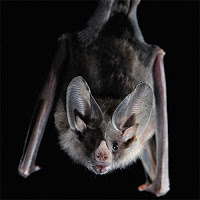 Possible rabies exposure is evaluated on a case-by-case basis. Because rabies is fatal, any humans with suspect rabies exposure should make a report to the local health department. Fortunately post exposure treatment for people is very effective in preventing disease, and doesn't involve painful stomach injections reported of long ago.
Possible rabies exposure is evaluated on a case-by-case basis. Because rabies is fatal, any humans with suspect rabies exposure should make a report to the local health department. Fortunately post exposure treatment for people is very effective in preventing disease, and doesn't involve painful stomach injections reported of long ago.
What Happens to Pets After Exposure to Suspected or Known Rabies?
Ultimately local rabies ordinances dictate how each case is handled. Pets with current or late rabies vaccinations may be quarantined for 10 days.
A pet that never has had a rabies vaccine may be promptly euthanized and tested for rabies. In other cases of unvaccinated pets, extended quarantine periods up to 6 months may arise.
What Can I Do to Protect My Pets and Family From Rabies?
- Vaccinate animals for rabies - this includes dogs, cats, ferrets and select farm animals.
- Teach children never to handle bats.
- Do not keep wild animals as pets.
- Spay and neuter your pets to decrease the desire to roam.
- Maintain control of your pets when outdoors or hiking to avoid accidental exposure to wildlife.
- Bat-proof your home and garage to avoid nesting sites and close encounters with bats.
- Report human bites from pets or wildlife to public health and animal control authorities.
Vaccination is key to protecting pets from rabies and offers peace of mind to pet owners and the Rabies vaccine is typically inexpensive.
Rabies vaccination…Just do it!
Featured veterinarian known as "Dr. Debbie" on national pet radio program, Animal Radio. Ebook author of "Yorkshire Terriers: How to Be Your Dog's Best Friend"; "Pugs: How to Be Your Dog's Best Friend"; "Mini Schnauzers: How to Be Your Dog's Best Friend"; and "Shih Tzu: How to Be Your Dog's Best Friend." Dr. Debbie's books.
Visit Website
 The Dogfather's Grooming Tip with Joey Villani
The Dogfather's Grooming Tip with Joey Villani
Answer To Your Dog's Dry, Winter Coat
Joey received a letter from a woman who has a Border Collie that was scratching and itching. She said she feeds her dog well and started adding supplements, including Omega fish oils and all those things that you find at a pet store. But after dong this, she said her dog's skin went from a dry, itchy skin to an oily, flaky, itchy skin.
This happens frequently, according to Joey. This is because people try to build a nice luxurious coat. And the first thing that they try to do is to add supplements, because everything you read about this says your dog is lacking one thing or another. However, what ends up happening is you sometimes overdo it. This is what happened to this woman.
So if you're feeding your dog well and they are doing good and then all of a sudden their coat starts to get dry, it is probably to the heat, which has gone on in our houses during the winter.
The fix is really easy, says Joey. Brushing and combing is essential, because that is going to get out all of that undercoat. This will give that working coat the strongest, healthiest coat to work with because you're pulling out the undercoat and you are leaving the topcoat and it's breathing properly. So that's number one.
 Number two, and Joey says this a lot, get yourself a spray bottle and fill it with distilled water. Make sure to use distilled water because it's not going to spoil on you as quickly as regular tap water will. Distilled water will last for quite some time. Next, add in a teaspoon of olive oil. This works better than coconut oil, unless you can find clarified coconut oil, which is clear not jellyfied.
Number two, and Joey says this a lot, get yourself a spray bottle and fill it with distilled water. Make sure to use distilled water because it's not going to spoil on you as quickly as regular tap water will. Distilled water will last for quite some time. Next, add in a teaspoon of olive oil. This works better than coconut oil, unless you can find clarified coconut oil, which is clear not jellyfied.
Shake the mixture well and spray it lightly on your dog's coat and brush it through. What the oil does is make the water stick to the coat so it then goes into the skin instead of just evaporating. Brush that through and you should have no problems. What this will do is allow the water to hydrate your dog's coat.
Joey does recommend cutting back or laying off the supplements. If his mixture doesn't work, then you may want to talk to your veterinarian, but a lot of times that's all it needs.
Animal Radio News - Lori Brooks
 What Happens To Marijuana Sniffing Dogs Now That It's Legal
What Happens To Marijuana Sniffing Dogs Now That It's Legal
Amid the legal haze that's arisen since voters all over the country have approved recreational marijuana, there is now doubt surrounding the future roles of police dogs and the admissibility of evidence uncovered by their marijuana-sensitive snouts. Many police dogs were trained to detect drugs and signal the presence of drugs to their handlers, who use it in part as a basis to search vehicles they've pulled over. However, many police dogs were not trained to differentiate between a legal recreational substance like marijuana and an illegal substance such as cocaine. In court, many of the defendants charged in these cases have argued that the drug-sniffing dogs police rely on to determine probable cause to search a vehicle may be detecting now legal marijuana in many states, instead of illegal substances. Without a firm basis for probable cause, the cases can be thrown out no matter what is eventually found in the vehicle. However, those police dogs trained to sniff out marijuana as a drug can still be used to assist federal authorities and search in areas where marijuana remains illegal, such as school buses, prisons and schools.
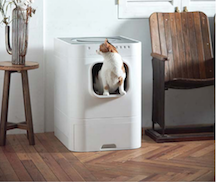 Litter Box Does Everything From Cleaning Waste to Tracking Cat's Weight
Litter Box Does Everything From Cleaning Waste to Tracking Cat's Weight
The biggest downside to having a cat is cleaning the litter box. To make it easier, the company PurrSong created a modern looking, self-cleaning litter box called LavvieBot. After your cat does their business in the LavvieBot, a rake on the inside gently and quietly removes clumps without breaking them apart in the process. You can set different timed intervals for the box to clean the bed. Waste is kept in a bag-lined drawer, which only needs to be emptied once every two weeks. The APP that goes with it connects to the LavvieBot to track litter box use and changes to your cat's weight. It can even differentiate between multiple cats. Another feature is the ability to receive a text when your cat has used it. In comparison to other automatic litters, LavvieBot is smaller, has a more subtle design and can add fresh litter automatically from a 1.7-gallon storage bin.
Can Our Pets Become Addicted to Opioids?
The opioid crisis isn't just impacting people. A study in Pennsylvania said there was a big increase in the amount of pain medication being prescribed for pets in the state. The research showed opioid prescriptions for animals in the state were up 41-percent over a 10-year period and that didn't correlate to an increased number of patients. The medications used by vets include hydrocodone, codeine and fentanyl patches. It's unclear why there was such a dramatic increase. But if opioids are so addictive for humans, what about pets? One expert involved in the research explained it like this, "We don't recognize that dogs or cats get addicted to these medications per se, probably because there's a psychological component that we don't know whether they experience, but we don't ever see signs of withdrawal, so we don't think that that is something that happens with them." The study also documented an increased use of opioids at veterinary practices across the state of Pennsylvania but it's not clear if this was a national trend.
 Listen to the entire Podcast of this show (#1210)
Listen to the entire Podcast of this show (#1210)





